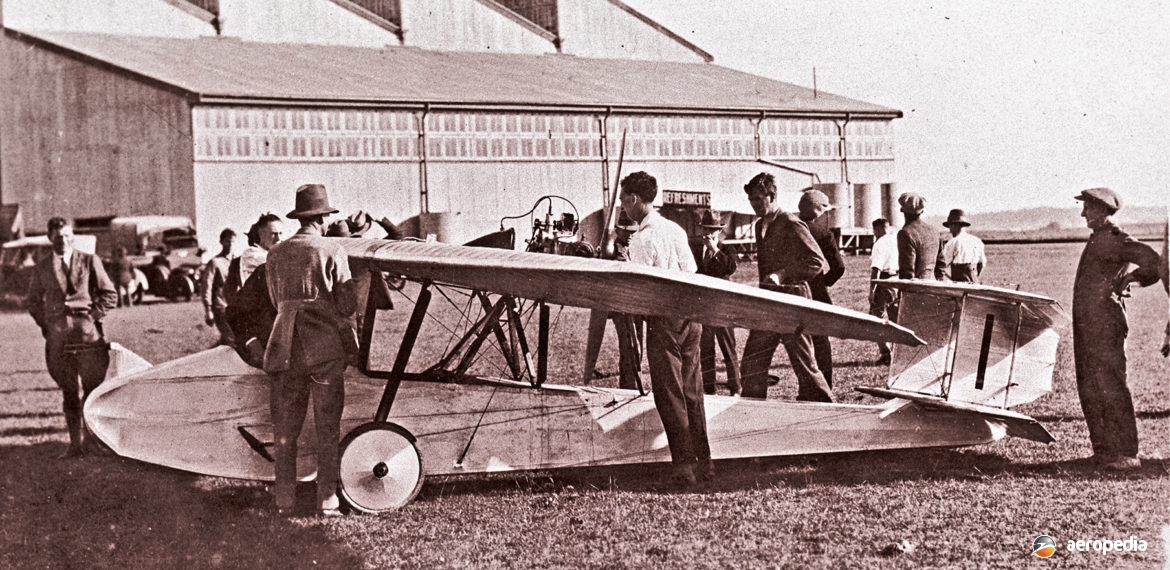Photograph:
Wackett Warbler at Richmond, NSW in 1924 (Author’s collection)
Country of origin:
Australia
Description:
Two-seat light sport aircraft
Power Plant:
One 22 kw (30 hp) Wizard CC (1490 cc) two-cylinder horizontally-opposed air-cooled engine
Specifications:
- [As per testing during trials]
- Wingspan: 9.14 m (30 ft)
- Length: 5.79 m (19 ft)
- Wing area: 13.37 m² (144 sq ft)
- Max speed: 100 km/h (62 mph)
- Landing run: 178 m (585 ft)
- Highest altitude: 1,500 m (4,920 ft)
- Empty weight: 175 kg (385 lb)
- Loaded weight: 272 kg (600 lb)
History:
The Warbler was a parasol wing monoplane with internal bracing designed by Sqdn Ldr L J R Wackett, an officer in the RAAF at the time in charge of the Government Experimental Aeroplane Factory in Sydney, NSW. The aircraft was an entrant in the Low-powered Aeroplane Competition in 1924 organised by the Australian Aero Club (NSW Section) and held at Richmond Aerodrome, NSW, from 29 November to 6 December that year. The report on the aeroplane indicated it was built as a two-seater but, due to the low power of the engine, it was not thought it could safely fly with two persons and should have been fitted with a larger engine, perhaps of 2000 cc capacity.
The wing structure was two main spars of spruce and plywood built up to form box spars with Warren girder type internal bracing. The fuselage was of square section of wood construction. The tail unit was of the biplane type with two inter-plane fins and rudders. The Wizard engine, a two-cylinder unit, was also designed and built by Wackett. The ultimate fate of the aircraft is not known but it has not survived.

